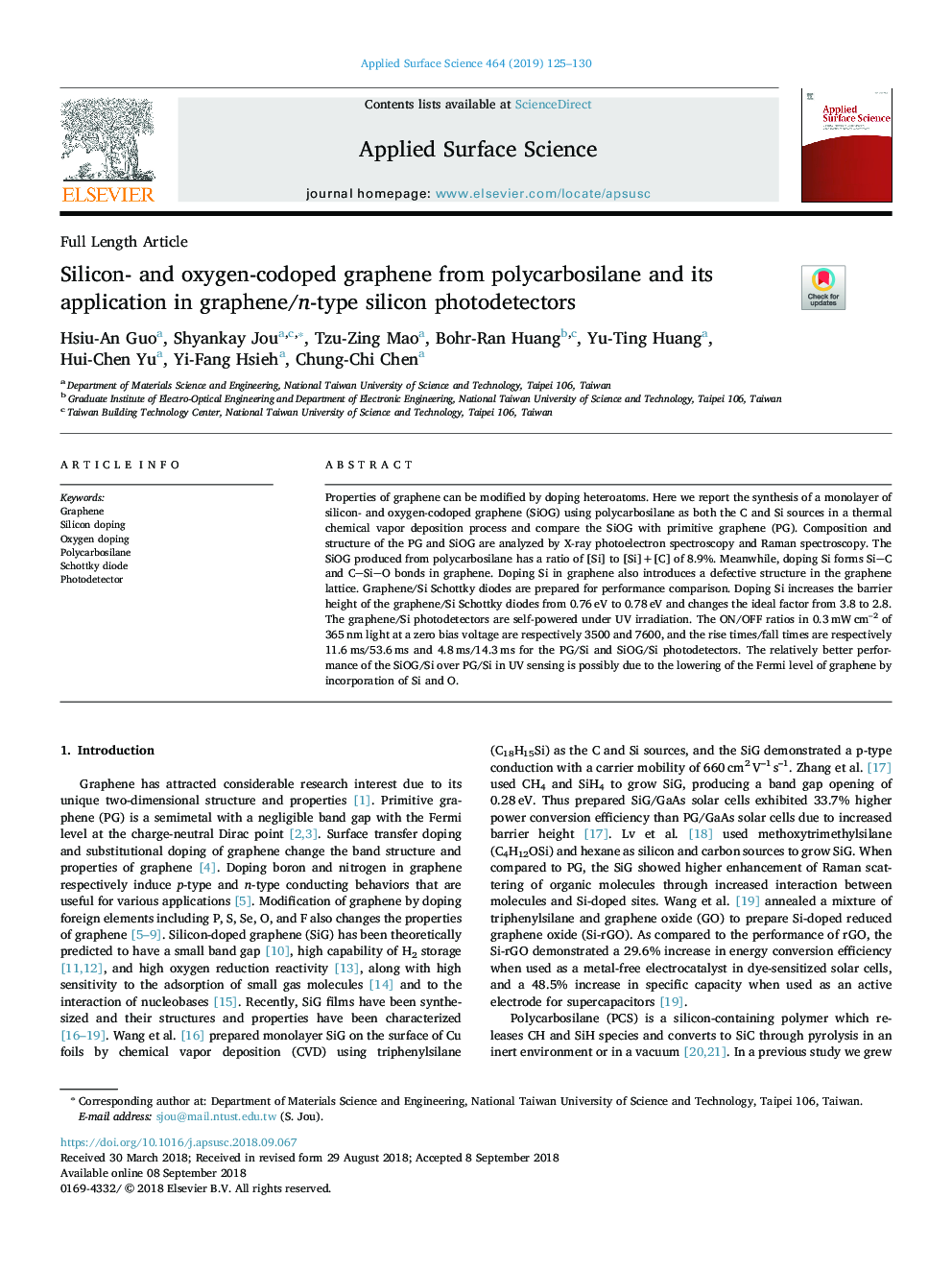| Article ID | Journal | Published Year | Pages | File Type |
|---|---|---|---|---|
| 9569542 | Applied Surface Science | 2019 | 6 Pages |
Abstract
Properties of graphene can be modified by doping heteroatoms. Here we report the synthesis of a monolayer of silicon- and oxygen-codoped graphene (SiOG) using polycarbosilane as both the C and Si sources in a thermal chemical vapor deposition process and compare the SiOG with primitive graphene (PG). Composition and structure of the PG and SiOG are analyzed by X-ray photoelectron spectroscopy and Raman spectroscopy. The SiOG produced from polycarbosilane has a ratio of [Si] to [Si]+[C] of 8.9%. Meanwhile, doping Si forms SiC and CSiO bonds in graphene. Doping Si in graphene also introduces a defective structure in the graphene lattice. Graphene/Si Schottky diodes are prepared for performance comparison. Doping Si increases the barrier height of the graphene/Si Schottky diodes from 0.76â¯eV to 0.78â¯eV and changes the ideal factor from 3.8 to 2.8. The graphene/Si photodetectors are self-powered under UV irradiation. The ON/OFF ratios in 0.3â¯mWâ¯cm-2 of 365â¯nm light at a zero bias voltage are respectively 3500 and 7600, and the rise times/fall times are respectively 11.6â¯ms/53.6â¯ms and 4.8â¯ms/14.3â¯ms for the PG/Si and SiOG/Si photodetectors. The relatively better performance of the SiOG/Si over PG/Si in UV sensing is possibly due to the lowering of the Fermi level of graphene by incorporation of Si and O.
Related Topics
Physical Sciences and Engineering
Chemistry
Physical and Theoretical Chemistry
Authors
Hsiu-An Guo, Shyankay Jou, Tzu-Zing Mao, Bohr-Ran Huang, Yu-Ting Huang, Hui-Chen Yu, Yi-Fang Hsieh, Chung-Chi Chen,
